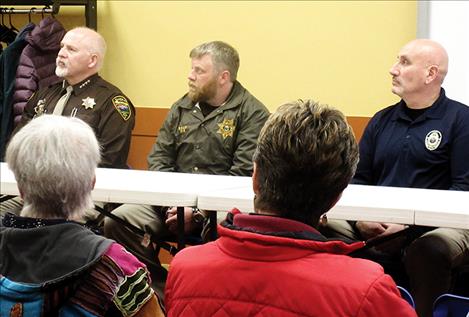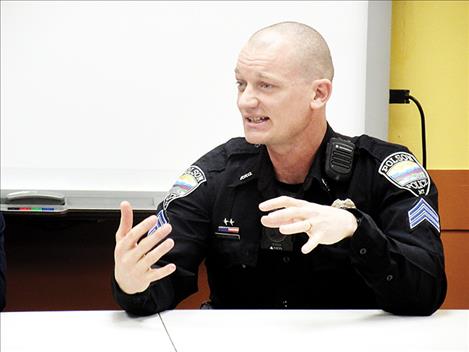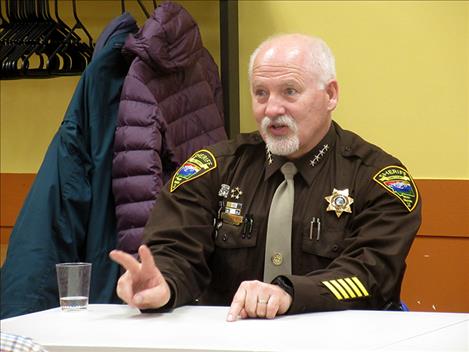- Home >
Law enforcement officials speak on local drug activity, solutions

Mary Auld
A panel of law enforcement officers, including Lake County Sheriff Don Bell, Lieutenant Levi Read, CSKT Tribal Police Chief Craige Couture and Polson Police Sgt. George Simpson, below, addressed local drug issues during the event.

Mary Auld
Polson Police Sgt. George Simpson

Mary Auld

Mary Auld

Mary Auld

Mary Auld
Polson Police Sgt. George Simpson
Issue Date: 3/27/2019
Last Updated: 3/26/2019 5:15:35 PM |
By
Mary Auld
Keep Reading!
You’ve reached the limit of 3 free articles - but don’t let that stop you.















